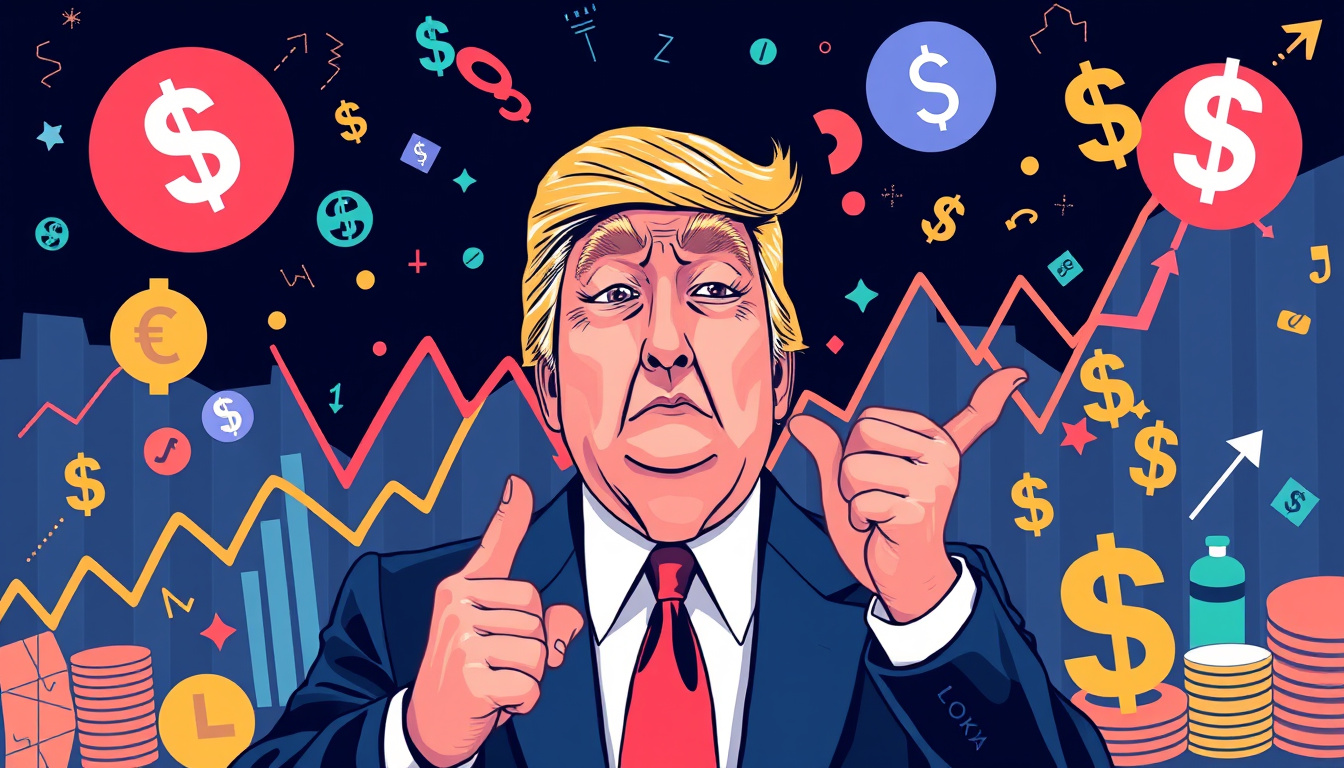Table of Contents
In recent times, the economic landscape has been rife with unpredictability, largely influenced by the bold policies of former President Donald Trump. His administration’s approach to tariffs has sparked debates that often veer into the realm of "4D chess," suggesting that what appears to be irrational might actually be a part of a grand strategy. As we unpack this idea, we delve into the underlying economic theory and the key figures who have shaped Trump's economic policies.
The Origins of Trump’s Economic Strategy
A pivotal figure in this unfolding narrative is economist Steven Moran, who put forth a framework for rebalancing global trade through strategic tariffs. His November 2024 paper, titled "A User's Guide to Restructuring the Global Trading System," wasn't merely a theoretical treatise; it proposed actionable tactics aimed at bringing manufacturing back to the U.S. Following its release, Moran was appointed as the Chairman of the Council of Economic Advisers—a move suggesting a direct influence on Trump's policy decisions.
However, there’s a significant distinction drawn by Moran himself; he emphasized that his paper should not be viewed as a step-by-step directive for Trump's tariffs. Instead, he referred to it as a "recipe book," indicating that while it outlines potential policies, the execution and specific implementations rest squarely with Trump.
The Controversial Tariff Decisions
One of the most talked-about aspects of Trump’s strategy has been the implementation of tariffs, some of which have drawn skepticism, such as those labeled as targeting supplies from "islands inhabited only by penguins." Such decisions have left many analysts and supporters scratching their heads, attempting to decipher the rationale behind them.
Critics have suggested that these moves are not rooted in sound economic thinking, while others argue that they might be part of a more ambiguous strategy aimed at surprising markets. Economists generally expect such abrupt tariff decisions to create turmoil, and Moran himself cautioned that high starting tariff rates could lead to market uncertainty and potential economic weakness.
The Mara Lago Accord: A Modern Parallel to the Plaza Accord
The notion of a "Mara Lago Accord" has gained traction, drawing historical parallels to the Plaza Accord of the 1980s. The initial Plaza Accord involved an agreement among allied nations to devalue the U.S. dollar to address trade imbalances, primarily with Japan. If Trump were to enact a similar agreement today, it would most likely need to involve China—an unlikely scenario given current geopolitical tensions.
Moran’s analysis suggests that for such negotiations to be viable, the strength of the U.S. dollar would first need to be reinforced. He argues that tariffs could serve as a mechanism to bolster the dollar's value, providing the United States with stronger leverage in trade discussions. However, recent trends show the dollar’s value on a declining path, raising questions about the feasibility of any forthcoming accords.
The Economic Landscape and Bond Yields
The implications of Trump's tariffs extend beyond international trade; they have also had notable effects on domestic financial markets, particularly U.S. bond yields. Critics have posited that the administration’s tariff policies could be designed to intentionally create a market downturn, prompting investors to flock to U.S. bonds and stabilize yields. Meanwhile, the yields have been on a downward trend, complicating this strategy further.
Moran warns that while high tariffs can lead to inflation, historical data indicates that much of this inflation could be mitigated by corresponding currency depreciation in affected countries. Indeed, during Trump’s previous term, tariffs on China resulted in a complex interplay between pricing and currency value that largely offset the projected inflationary effects.
What Lies Ahead
As we consider the future implications of Trump’s economic strategies, it becomes crucial to assess the potential outcomes of his tariff policies and broader economic plans. While the traditional economic establishment may view these tactics as reckless, some supporters argue they might be positioning the U.S. for a long-overdue trade reckoning.
In observing the current dynamics, it remains pivotal to weigh the long-term effects of these unconventional strategies against their short-term economic repercussions. As speculation continues regarding the true intentions behind Trump’s tariffs, mediation through informed economic discourse will be essential in navigating this complex and evolving trade landscape.
In conclusion, Trump's bold economic strategy presents a unique intersection of innovation and controversy—one that could defy expectations if managed under a coherent framework. Whether these policies will lead to a resurgence in American manufacturing and a healthier trade balance is yet to be seen, but they undeniably challenge the status quo and provoke critical discussions about the future of U.S. economic policy.
By Wolfy Wealth - Empowering crypto investors since 2016
[highlight=transparent]⚡️Exclusive research[/highlight]
[highlight=transparent] 📈 Early signals[/highlight]
[highlight=transparent] 📬 Weekly reports[/highlight]
[highlight=transparent] Just what you need to win in crypto. [/highlight][highlight=transparent]Click [/highlight]Here
Disclosure: Authors may be crypto investors mentioned in this newsletter. Wolfy Wealth Crypto newsletter, does not represent an offer to trade securities or other financial instruments. Our analyses, information and investment strategies are for informational purposes only, in order to spread knowledge about the crypto market. Any investments in variable income may cause partial or total loss of the capital used. Therefore, the recipient of this newsletter should always develop their own analyses and investment strategies. In addition, any investment decisions should be based on the investor's risk profile.





